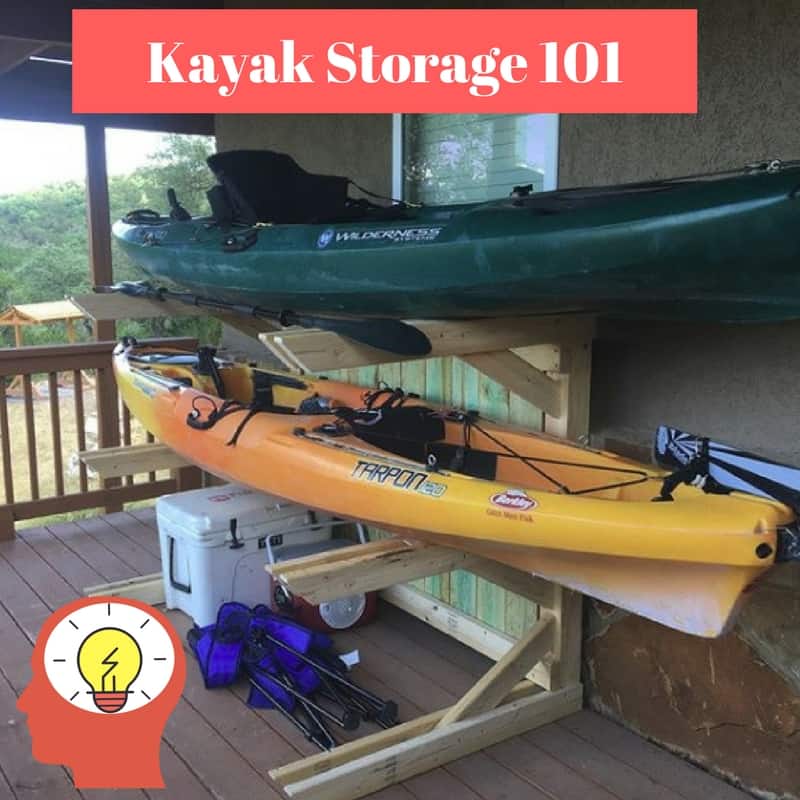https://www.rei.com/learn/expert-advice/kayak-storage.html

Where to Store Your Kayak: Follow the link above for proper storage of your boats. These helpful hints will prolong the life of your kayak or canoe.
If you have an inflatable or folding kayak, storage is simple; you can loosely roll or fold your boat up and stash it in a cool, dry place. But, if you have a traditional hard-shell kayak, the size and heft of the boat can make it challenging to find a spot to store it. When thinking about where to keep your boat, remember that a good location is one that limits exposure to sunlight, moisture and extreme temperatures: Sunlight: The ultraviolet rays that accompany bright sunlight can degrade just about any kayak hull material, from fiberglass to plastic to coated fabric. Moisture: Consistent exposure to moisture from rain and snow can cause hull materials to degrade over time. Heat: Extreme heat can cause deformation of hull materials, so it’s important to keep your boat away from heat sources, out of rooms that get really warm and away from direct sunlight. Cold: Cold temperatures aren’t as big of a concern as heat, but repeated freezing and thawing can potentially damage your boat. This is especially pertinent if you have a fiberglass boat that has been repeatedly exposed to moisture during storage.
Storage Locations
You have two options: indoors or out.
Indoor storage: If you have the room to do so, keeping your kayak indoors, whether that’s in your house, garage or a shed, is the preferred option because of the protection it offers from the elements.
Outdoor storage: For many people, especially those who live in small spaces like an apartment or condo, indoor storage just isn’t feasible. Outdoor spots, like under a deck, below the eaves of a roof or beneath a strung-up tarp, are all suitable options for protecting your boat. As you look for the right outdoor spot, think about these points:
Shoot for shade: Try to find a shaded spot outside to protect your boat from UV rays and heat. If shade is limited or not available, use a weather-resistant tarp that will cover the entire hull at all times of day. Suspend the tarp above the hull rather than simply wrapping the tarp around the boat; direct contact with the hull can promote mold or fungal growth in wet environments.
Protect against moisture: Make sure rain and snow can't collect in or on the boat. If you’re suspending a tarp above the boat, be sure the tarp won’t fill up and press down on the hull, which can deform the boat.
